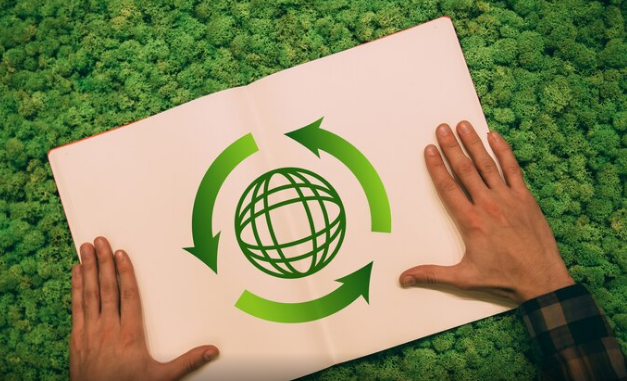Waste is often seen as the end of the line for products we use. But what if waste could be turned into a valuable resource instead? This idea is at the heart of the circular economy. Unlike the traditional “take-make-dispose” model, a circular economy focuses on reusing, repurposing, and recycling materials to reduce waste and protect our planet.
In this article, we’ll explore how businesses and individuals can adopt circular economy principles to make a real difference.
What is the Circular Economy?
The circular economy is a system designed to minimize waste and make the most of resources. Instead of throwing things away, materials are reused, repaired, or recycled to extend their lifespan. This approach reduces the need for new resources, lowers environmental impact, and creates economic opportunities. It’s about thinking differently and valuing materials at every stage of their lifecycle.
Why Does the Circular Economy Matter?
The world produces billions of tons of waste every year. Landfills are overflowing, and natural resources are depleting rapidly. This linear way of doing things is unsustainable. The circular economy offers a solution by reducing waste and conserving resources. Here’s why it matters:
- Reduces Pollution: Less waste means less pollution in our air, water, and soil.
- Saves Resources: Reusing materials reduces the need to extract new raw materials.
- Supports the Economy: Recycling and repair industries create jobs and boost local economies.
- Combats Climate Change: Reducing waste and emissions helps lower our carbon footprint.
Principles of the Circular Economy
To adopt a circular economy, businesses and individuals must embrace three key principles:
1. Design Out Waste and Pollution
Products should be designed with durability, repairability, and recyclability in mind. For example, modular smartphones allow users to replace parts instead of buying a new device. This principle also encourages reducing harmful chemicals and materials that make recycling difficult.
2. Keep Products and Materials in Use
Items should be reused, repaired, or refurbished whenever possible. For example, second-hand clothing stores and furniture refurbishing businesses thrive on this principle. Sharing economies, such as ride-sharing or tool-sharing platforms, also help extend the life of products.
3. Regenerate Natural Systems
The circular economy supports practices that restore nature. Composting, for instance, turns organic waste into nutrient-rich soil. Similarly, sustainable farming practices like crop rotation and regenerative agriculture help rebuild soil health and support biodiversity.
How Businesses Can Embrace the Circular Economy
Businesses play a vital role in driving the circular economy. Here are some ways they can contribute:
1. Adopting Circular Design
Companies can design products that are easier to repair, upgrade, or recycle. For example, IKEA offers spare parts for furniture, extending its life. This not only reduces waste but also builds customer loyalty.
2. Implementing Take-Back Programs
Brands can set up systems to take back old products for recycling or refurbishing. Nike’s Reuse-A-Shoe program collects old sneakers to create new surfaces. Similarly, electronics companies like Apple and Samsung encourage consumers to return old devices for proper recycling.
3. Partnering with Recycling Companies
Businesses can work with specialized recycling firms to ensure materials are reused effectively. For example, Dell partners with recycling companies to recover precious metals from electronics. These partnerships also help in developing innovative ways to recycle complex materials.
4. Using Recycled Materials
Incorporating recycled materials into products reduces the demand for virgin resources. Patagonia, for instance, makes jackets from recycled plastic bottles. This reduces plastic waste while providing high-quality products that consumers value.
5. Offering Product-as-a-Service Models
Instead of selling products, businesses can rent them out. This ensures products stay in use longer. For example, Rent the Runway provides designer clothing rentals. This model reduces waste and appeals to eco-conscious consumers.
6. Educating Customers
Businesses can raise awareness about sustainability by educating customers. Campaigns that promote recycling, proper disposal, or repair services can drive positive change. A well-informed customer base is more likely to support sustainable practices.
How Individuals Can Support the Circular Economy
Adopting circular economy principles isn’t just for businesses. Individuals can also make a big impact by rethinking how they consume and dispose of items.
1. Buy Less, Choose Well
Before buying something new, ask yourself if you really need it. Investing in high-quality, durable products reduces waste in the long run. Opt for timeless designs rather than trendy items that quickly go out of style.
2. Repair and Repurpose
Fix broken items instead of throwing them away. YouTube tutorials make it easy to repair electronics, furniture, and more. Get creative with repurposing items, like turning old jars into storage containers or using scrap fabric for DIY projects.
3. Recycle Properly
Learn your local recycling rules to ensure materials are processed correctly. Contaminated recyclables often end up in landfills. Sorting your waste properly can make a big difference in recycling efficiency.
4. Support Sustainable Brands
Choose brands that prioritize sustainability and circular economy practices. Your spending choices send a powerful message. Supporting businesses that embrace circular models encourages more companies to follow suit.
5. Compost Organic Waste
Instead of tossing food scraps, compost them. This enriches soil and reduces methane emissions from landfills. Home composting systems are easy to set up and maintain, even in small spaces.
6. Share and Borrow
Sharing is a simple way to reduce waste. Borrow tools, books, or even clothes from friends and neighbors. Platforms like libraries of things make sharing more accessible, reducing the need to own rarely used items.
Real-World Examples of the Circular Economy
Many organizations are already putting circular economy principles into practice. Here are some inspiring examples:
1. The Ellen MacArthur Foundation
This global charity works with businesses, governments, and educators to promote the circular economy. They provide resources and support to make sustainability a reality. Their initiatives have influenced industries worldwide.
2. Loop
Loop offers a reusable packaging system for everyday products. Customers return empty containers for cleaning and refilling, reducing single-use plastic waste. Companies like Unilever and Nestlé partner with Loop to provide sustainable packaging options.
3. Fairphone
Fairphone designs modular smartphones that are easy to repair and upgrade. This reduces electronic waste and extends product life. Their commitment to ethical sourcing and transparency sets a benchmark for the tech industry.
4. Interface Carpets
Interface, a global carpet manufacturer, collects old carpets and recycles them into new products. Their closed-loop system minimizes waste and promotes sustainable design. They aim to become a fully carbon-neutral company.
5. TerraCycle
TerraCycle partners with companies to recycle hard-to-recycle items, from coffee pods to toothpaste tubes. Their innovative programs make recycling easier for consumers. They also offer zero-waste boxes for households and businesses.
6. Clothing Resale Platforms
Platforms like ThredUp and Poshmark encourage consumers to buy second-hand clothing. This reduces textile waste and promotes a circular approach to fashion.
Challenges to Overcome
While the circular economy has many benefits, it also faces challenges:
- High Initial Costs: Setting up recycling and refurbishing systems can be expensive. Small businesses may struggle to afford these changes.
- Consumer Awareness: Many people are unaware of circular economy principles and how to apply them. Education campaigns are essential.
- Regulatory Barriers: Policies often favor traditional linear systems over circular models. Governments need to create incentives for circular practices.
- Technological Gaps: Some materials are difficult to recycle with current technology. Research and innovation are needed to solve these issues.
- Cultural Resistance: Changing consumer habits takes time. People need to see the value in repairing and reusing items.
The Future of the Circular Economy
Despite these challenges, the future looks bright for the circular economy. Advances in technology, growing consumer demand, and supportive policies are driving progress. Here are some trends to watch:
1. Digital Tools
AI and IoT are making it easier to track and manage materials in circular systems. For example, smart sensors can identify recyclable items in waste streams. Blockchain technology is also being used to track materials and ensure transparency in supply chains.
2. Collaborative Efforts
Partnerships between businesses, governments, and nonprofits are accelerating circular economy adoption. Collaboration ensures better resource management and helps overcome common challenges.
3. Policy Support
Governments are introducing policies to promote the circular economy. For instance, the European Union’s Circular Economy Action Plan aims to make sustainable products the norm. Tax incentives for recycling businesses and penalties for wasteful practices are becoming more common.
4. Consumer-Driven Change
As awareness grows, consumers are demanding more sustainable products and services. Businesses that ignore this shift risk losing market share.
Conclusion
The circular economy is a powerful way to rethink waste as a resource. By adopting circular principles, businesses and individuals can reduce waste, conserve resources, and protect the planet. Whether it’s designing products for durability or composting at home, every action counts. We are assured of a sustainable future where waste is a thing of the past, only if we work together. And as always, now is the time to start the journey of making the circular economy a reality.

